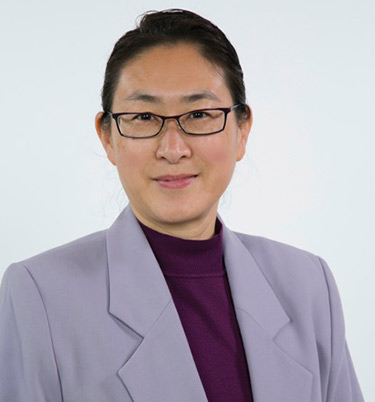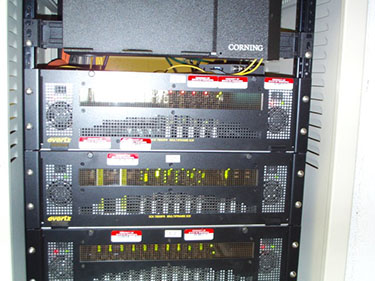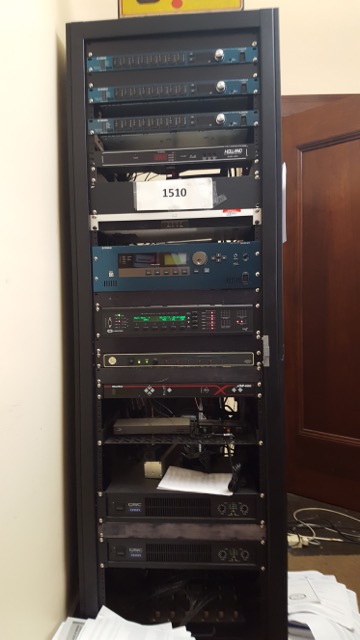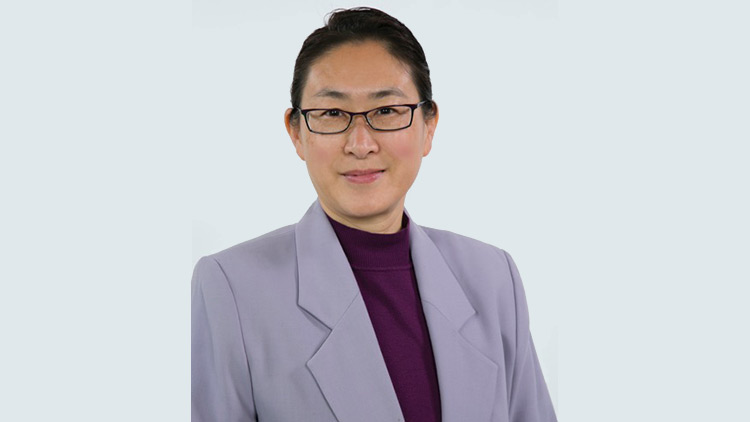
Ling Ling Sun, Assistant General Manager, Technology/CTO, Nebraska Educational Telecommunications
The NET (Nebraska Educational Telecommunications) is a radio and television network serving the entire state of Nebraska. NET provides live television legislative coverage, on-demand coverage of public legislative hearings, gubernatorial, and supreme and appellate court activity held at the state capitol. NET operates and maintains the statewide video conferencing network managed by the Chief Information Officer department. As the Assistant General Manager, Technology/CTO NET, Ling Ling Sun is constantly searching for smarter ways to connect. Profoundly driven and refreshingly open to new ideas, Sun is devoted to maximizing the upgrade potential for future technologies at her organization. We were fortunate to meet Sun at the AV/IT Leadership Summit in Denver where she shared her wisdom on the IoT and the intersection of AV and broadcast.
How is AV/IT convergence playing out in your facility?
Ling Ling Sun: NET has embraced and adopted IT technology into the AV and broadcasting business, one example being our multi-platform distribution. Beside our statewide over-the-air radio and television broadcasts, NET content is available as video streams from NET and Capitol websites, through NET and Capitol mobile apps. Legislature hearings are provided to the state capitol through closed circuit television. By searching the NET Nebraska mobile app, you will find three apps: NET Nebraska, NET Radio Nebraska and Nebraska Capital Live. NET utilizes VBrick Rev for the statewide video conferencing network.

What AV/IT problems have you solved recently?
Ling Ling Sun: A good case would be the NET studio to transmitter Link (STL). The STL was switched from satellite delivery to terrestrial in February 2012. NET signals are being converted from SDI /ASI signals to IP and sent out through the state network backbone and last mile services providers to our transmitter sites. The switch brought unique technical challenges to both engineering and service providers on handling and passing real-time multicast streams.
In the last three years, we targeted improving STL QoS and reliability through multicast awareness, establishing diversity paths, and hot-standby switches. We will continue identify technology advancements in this area, continuing to apply them to our delivery system.
Does the IoT (Internet of Things) have any influence in your organization and or facility?
Ling Ling Sun: I think so. If the industry put a lot of effort into its R&D, we would take advantage of it. If one is selecting a component to talk about, it would be sensors; since sensors are an essential part of IoT and they have played a big part in AV and broadcasting for decades.
This year, we are looking into refreshing/upgrading NET’s monitoring and control system, the system we use to monitor and control remote transmitter sites. We want to see what is available in terms of hardware, software and applications. We do not want to simply replace the existing system but to enhance it and extend it to take full advantage of recent technology advancement in this field.
What AV/IT do you hope to buy in the near future? Why?
Ling Ling Sun: I will reference two projects at the State Capitol as examples.

The State Capitol Legislature equipment for live legislature coverage was acquired in 2008. NET Government Services has been working with the Capitol technology service team to refresh the existing equipment. The first phase of the equipment refresh is to upgrade the encoding system, currently scheduled to be completed in FY 2017. The second phase of the refresh will be replacing the video and audio systems, which will occur in FY 2018 and possibly extend into FY 2019.
The second project is the Capitol Closed Circuit TV (CCTV) refresh project. NET provides CCTV feeds to the State Capitol campus. The current CCTV feeds serves all of the legislative sessions, hearing rooms, Governor’s press room, supreme and appellate court rooms, and the Nebraska Department of Education meeting room.
Under OCIO’s leadership, NET is working to develop options for potentially upgrading the CCTV system in conjunction with the capitol HVAC renovation project that will be going on for the next several years. We are researching “future-proof” backbone solutions in hopes of maximizing the upgrade potential for future technologies. If any company has a solution, please feel free to contact me.
How you procure/purchase your AV for in-house installs?
Ling Ling Sun: NET is a state agency. We follow state rules and regulations for procurement/purchasing. Please check http://das.nebraska.gov/materiel/purchasing/ for any upcoming Invitations to Bid, RFPs and RFI postings.

Where are technology manufacturers getting it wrong or missing opportunities?
Ling Ling Sun: Proprietary products and solutions. Budget shortfalls make users think twice before investing in proprietary equipment. Manufacturers should listen to customers’ needs to develop more integrated products and unified solutions. I hope AV/IT convergence is a catalyst that will speed up our industry in this direction.
At NAB 2017, there was an IP interoperability pavilion showing such integration solutions from different manufacturer products that comply with a set of common interoperable standards. Unified solutions have and will continue to spread to other technical areas.
What is the biggest obstacle to collaboration? What are your collaboration strategies?
Ling Ling Sun: Collaboration takes two or more parties. Technologies eliminate physical barriers and make collaboration from remote sites possible. As such, financial feasibility and equipment selection needs to be carefully considered, especially when determining choosing service-based options or investing in on-premises equipment.
- Once a technical solution is in place, the obstacles shift back to collaboration participants. A successful collaboration strategy is to utilize technology and encourage open-minded conversations, to ensure a good understanding of the issues and goals that the group is collaborating on.

